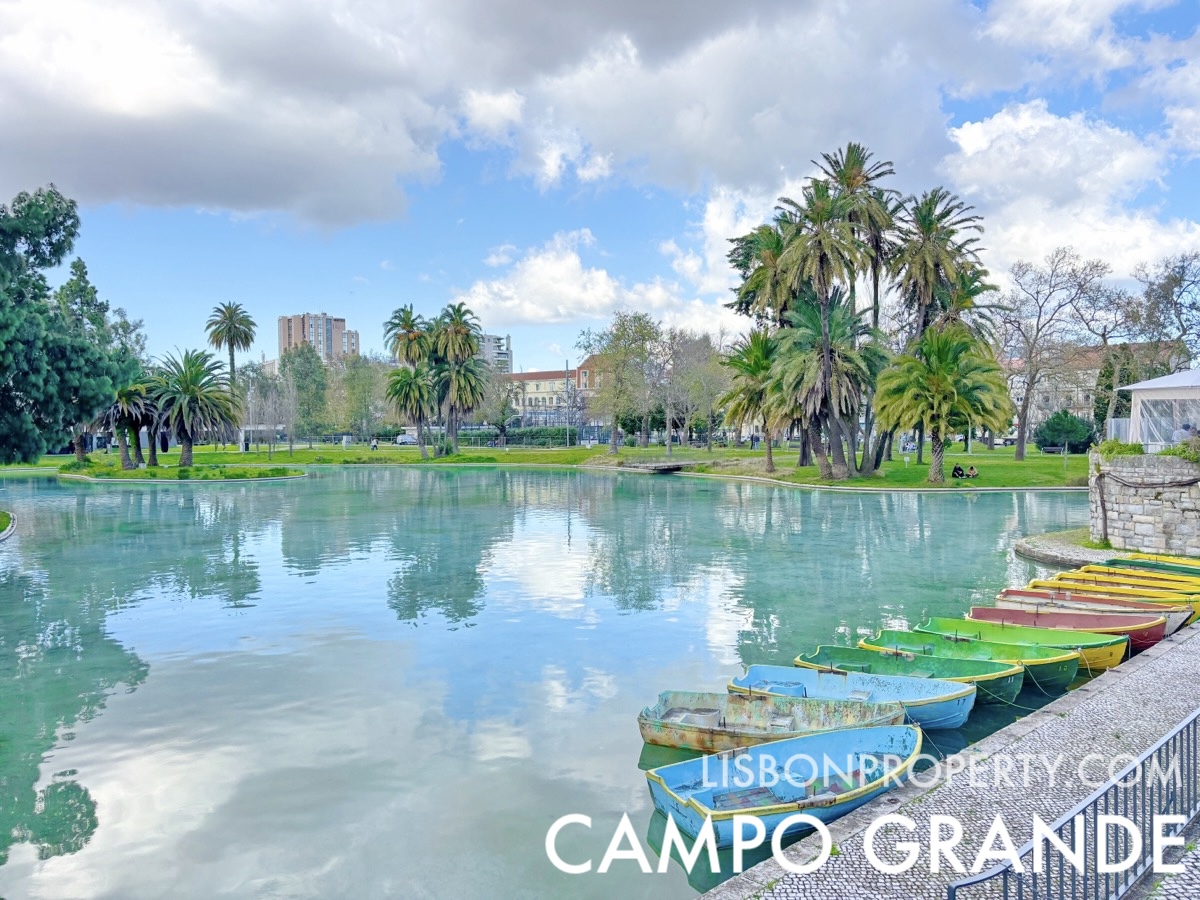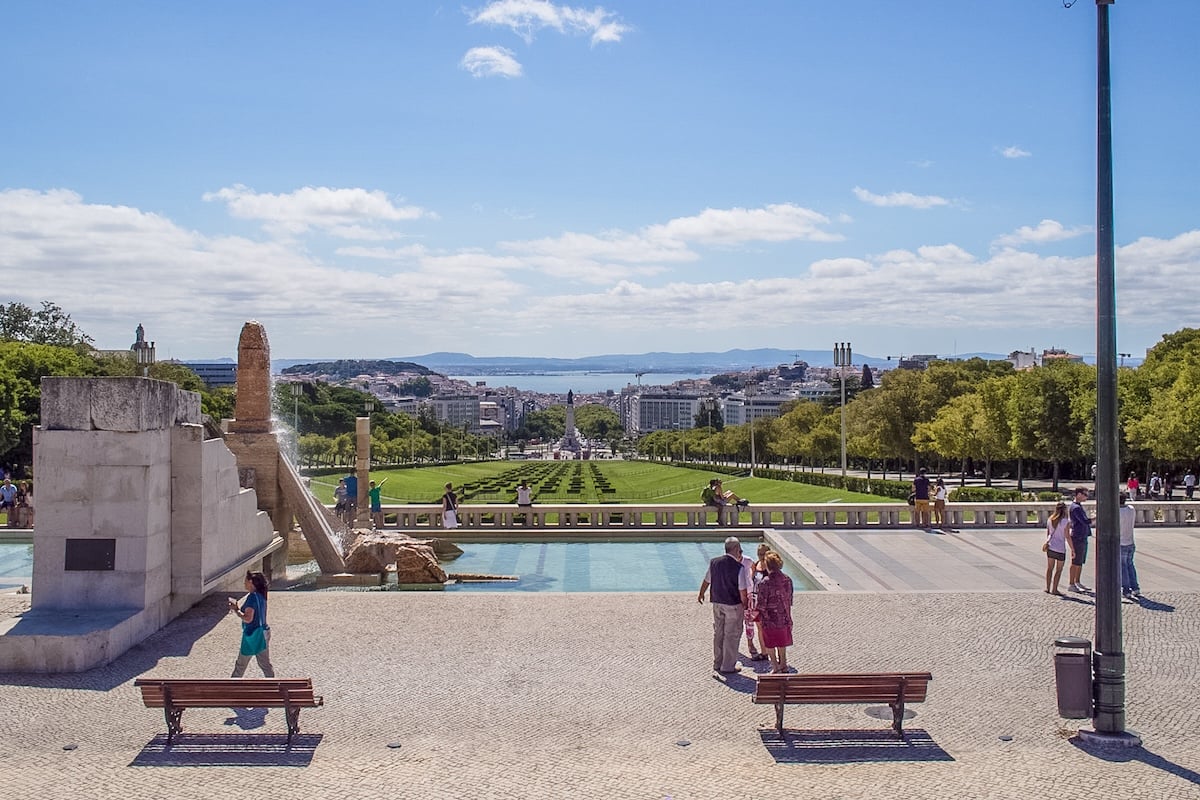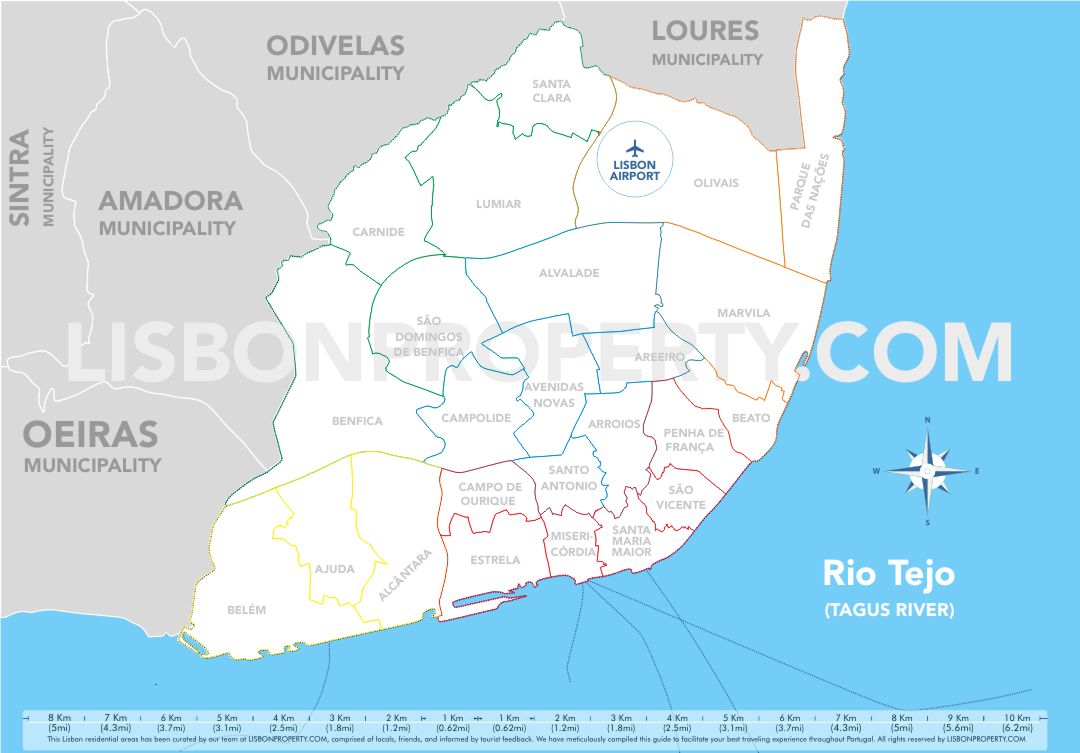Avenida da Liberdade • Lisbon, Portugal
Avenida da Liberdade (Liberty Avenue), considered the 35th most expensive avenue in the world, stands as Lisbon’s premier boulevard, echoing the grandeur of Parisian avenues. Evolving over time, it has transformed from a primarily residential area to a bustling business hub. Today, it also stands as one of Europe’s most exclusive shopping districts. Set within a broad 90-meter valley, this luxurious stretch extends 1.2 kilometers between Restauradores Square and the Marquês de Pombal Monument, considered the epicenter of luxury, culture, and history in the city. As you stroll, you’re flanked by neoclassical architecture interspersed with lush gardens, ornate fountains, and statues. The avenue boasts elite boutiques such as Chanel, Louis Vuitton, and Prada. Furthermore, it’s peppered with sophisticated city
hotels, diverse dining venues ranging from traditional Portuguese eateries to chic national and international chef restaurants, historic theaters, and prominent business offices. In essence, Avenida da Liberdade combines the city’s opulent retail, cultural vibrancy, and architectural significance into one unmatched portugal luxury living experience.
Living in Avenida da Liberdade
- Properties for sale in Avenida da Liberdade – Avenida da Liberdade properties page with homes for sale
- Sousa Martins Premium Apartments – Residential apartments Development
A Simple Guide to Avenida da Liberdade
Avenida da Liberdade is a pedestrian-friendly avenue, perfect for strolling and exploring the numerous exits along the way.
The creation of Avenida da Liberdade marked the beginning of the city’s expansion northward. Perhaps due to its design reminiscent of the ‘boulevards’ of Paris and the grand avenues of European capitals, it soon attracted families from the wealthier classes who established their residences there. Even today, Avenida da Liberdade is a symbol of social status and affluence. Therefore, it is an excellent place to settle down, where one’s career and personal life can go hand in hand with the success they aspire to, given the resources and numerous opportunities that can be found on this Avenue and its surroundings.
South Point: Praça dos Restauradores
- A hub for luxury hotels, fine dining restaurants, and theaters.
- Leads to Rossio and Baixa de Lisboa, culminating at the scenic Praça do Comercio by the Tagus River.
- Western access leads to the iconic Gloria Tram, offering routes to Principe Real and Bairro Alto.
- The eastern side, known as Portas de Santo Antão, is a cultural hotspot with traditional theaters, bars, and eateries. Among them is the Hard Rock Café, housed in the old Condes Cinema building, offering patrons a blend of great ambiance, food, and rich musical heritage.
Along the Avenue
- Pedestrian wide avenueu with trees, cobelstone floor, arquitectural buldings, and monuments
- Beautiful wide sidewalks adorned with “calçada portuguesa” stone patterns.
- A myriad of monuments, statues, and lush trees providing shade.
- Educational Institutions: Several higher education institutions are also nearby Avenida da Liberdade, including the Universidade Nova de Lisboa (New School of Business and Economics), the Faculdade de Direito, and ISEGI, among others. Regarding primary and secondary education, the avenue boasts various colleges and external institutes where education is elevated to a standard of excellence. These institutions may vary in their exclusivity, but they always maintain high quality.
- Tranquil gardens featuring lakes.
- Quaint kiosk cafes boasting splanades.
- Architectural highlights along the avenue include a blend of art deco, French architecture, and renovated structures
- Luxurious hotels and high-fashion boutiques like Loewe, Prada, Carolina Herrera, Louis Vuitton, and more.
- The avenue is the top choice for luxury brands seeking presence.
- Numerous office spaces and restaurants, all meticulously designed with attention to detail.
- Metro station access dots the Avenida, offering convenient connections to other parts of the city.
North Point: Marques de Pombal monument (offices area)
- To the north lies the lush Parque Eduardo VII.
- Roundabout surrounded by office buildings hosting premier brands.
- Provides five exits to Lisbon city
- Two western exits lead to the Rato area of Lisbon’s old town and the main artery to Avenidas Novas Amoreiras and the highway to Cascais.
- North-east exit connects to Avenidas Novas, namely Avenida Fontes Pereira de Melo to Saldanha and Av. da Republica.
- Eastern exit offers access to the old eastern part of Lisbon.
South of Avenida da Liberdade
- The vibrant Rossio with its renowned train station.
- Baixa’s traditional shopping streets stretching to the picturesque Tagus River area.
Avenida da Liberdade Atractions
- Marques De Pombal: A significant roundabout crowned by a monument dedicated to Sebastião José de Carvalho e Melo, the Marquis of Pombal, recognized for his leadership after the 1755 Lisbon earthquake.
- Teatro Politeama: A historic theater known for its impressive performances, ranging from plays to musicals, set in a beautiful architectural backdrop.
- Sociedade de Geografia de Lisboa: An institution dedicated to the study and promotion of geography and its related sciences, hosting a variety of events and exhibitions.
- Chamber of Commerce and Industry: An organization supporting and advocating for local businesses, playing a pivotal role in Lisbon’s economic growth.
- Cinemateca Portuguesa Cinema Museum: A museum celebrating Portugal’s rich cinematic history, showcasing films, equipment, and other related artifacts.
- Praça dos Restauradores: A central square commemorating Portugal’s restoration of independence in 1640, marked by the Monumento dos Restauradores.
- Monument Deads of Great War: A memorial honoring Portuguese soldiers who sacrificed their lives during World War I.
- Monumento dos Restauradores: An obelisk in Praça dos Restauradores, celebrating Portugal’s liberation from Spanish rule in the 17th century.
- Busto do Libertador do Chile O’Higgins: A bust honoring Bernardo O’Higgins, a leader of Chilean independence from Spanish colonial rule.
- Monumento a Rosa Araújo: A tribute to Rosa Araújo, a notable figure in Lisbon’s history, recognized for his contributions to the city’s development.
- Pátio da água: A serene water courtyard offering a tranquil space amidst the city hustle.
- Glória Funicular (Ascensor da Glória): A historic funicular railway connecting the Restauradores Square to the Bairro Alto, offering picturesque views of the city.
- Lavra Funicular (Ascensor da Lavra): Lisbon’s oldest funicular railway, inaugurated in 1884, that connects the Largo da Anunciada to Rua Câmara Pestana. It’s both a practical mode of transport up the city’s steep hills and a nostalgic journey through time.
- Cinemateca Júnior (Cinemateca Portuguesa–Museu do Cinema): A segment of the Cinemateca dedicated to younger audiences, promoting cinematic education and appreciation.
- Palácio Foz: An ornate palace showcasing intricate architectural designs, now serving as a cultural venue.
- Teatro Eden: A former cinema hall, now repurposed, with a striking Art Deco facade that stands as an architectural marvel in Lisbon.
- Fashion stores: Boutiques offering a mix of international luxury brands and local designers, reflecting Lisbon’s vibrant fashion scene.
- Restaurants: Dining venues offering a culinary journey from traditional Portuguese dishes to international cuisines. Near Avenida da Liberdade, there’s the renowned Oliver Guilty Restaurant. This establishment is not just a place to eat but an experience. Defined by its simplicity, it’s where gastronomy meets nightlife. Patrons can enjoy mouth-watering hamburgers, pizzas, and renowned pastas, and later, groove to the tunes of guest DJs.
- Hard Rock Café: Housed in the historic Condes Cinema building on Avenida da Liberdade, this renowned international restaurant chain boasts an eclectic menu set amidst a rich array of musical memorabilia. Notable exhibits include pieces from local legends like Rui Veloso and Moonspell, as well as international icons such as the Rolling Stones and Elvis Presley.
- Hotels: Hotels: Accommodations ranging from historic establishments to modern luxury suites, catering to all types of travelers. Notably, the Tivoli Hotel and Fontecruz Hotel stand out as exclusive and sophisticated venues. Ideal for those in the city for business meetings, these hotels offer a refined ambiance.
- Jewelers: Shops showcasing exquisite Portuguese craftsmanship, offering a range of precious jewelry.
- Estação do Rossio: A historic train station, characterized by its distinctive Neo-Manueline facade, connecting Lisbon to other parts of Portugal.
Walk through Avenida da Liberdade
The Avenida da Liberdade is centrally located in Lisbon, covering a 1.2 km stretch from Praça dos Restauradores to the Rotunda Marquês de Pombal. This avenue is a continuation from the historical Rua Augusta, which starts near the River Tagus at locations like Cais das Colunas and Terreiro do Paço. It’s approximately a 15-minute walk from the river to Restauradores. Recognized as one of Lisbon’s primary routes, its design and width are comparable to significant boulevards in other European capitals. The avenue has broad sidewalks, patterned with traditional Portuguese cobblestones, and features gardens along its length. The Garden of Avenida da Liberdade offers a peaceful space for both residents and tourists, providing an area for relaxation and leisure in the middle of the city. This location is central, making it a convergence point for city life and calm in Lisbon.
Avenida de Liberdade Walking distance to neighboring attraction areas
… to Bairro Alto and Principe Real
Path: Head southwest from Avenida da Liberdade. Use the Gloria Tram or walk down the Rua da Gloria. Once at the bottom, you’re at the edge of Bairro Alto. To reach Principe Real, head north from this point.
… to Mouraria, Castelo e Alfama
Path: Start southeast down Avenida da Liberdade to Rossio. From there, head east to Martim Moniz, the gateway to Mouraria. Ascend towards the Castelo de São Jorge. Beyond the castle, you’ll find Alfama.
… to Cais do Sodré
Path: Walk southwest from Avenida da Liberdade toward Rossio, then head west to Praça do Comércio. From there, it’s a straight walk south to Cais do Sodré.
… to Cais das Colunas e Terreiro do Paço
Path: Walk southwest from Avenida da Liberdade to reach Rossio. Head straight south from Rossio to reach Praça do Comércio (Terreiro do Paço) and its riverside Cais das Colunas.
… to Alcântara
Path & Transport: It’s a bit further, so from Cais do Sodré, consider catching a tram or train to Alcântara.
… to Belém
Path & Transport: From Cais do Sodré, take the train line towards Cascais and exit at Belém. Alternatively, take tram 15 from Praça do Comércio.
… to Airport
Path & Transport: Head to the Restauradores subway station at the south of Avenida da Liberdade. Take the blue line and switch to the red line at São Sebastião station, which leads to the airport.
… to Parque das Nações
Path & Transport: From Avenida da Liberdade, walk to the Marquês de Pombal subway station. Take the yellow line and switch to the red line at Saldanha station. Continue until the Oriente station, which is in Parque das Nações.
What the international media say about Portugal’s Avenida da Liberdade
Avenida da Liberdade, often likened to Paris’s Champs-Elysées, stands as an emblematic boulevard in central Lisbon, intertwining the city’s rich history with its modern vibrancy. Located in the heart of Lisbon, this pedestrian-friendly avenue is adorned with cobblestone walkways decorated in traditional Portuguese patterns and punctuated by ornate fountains. From the historic Marquês de Pombal Square to Restauradores Square, one can feel the pulse of Lisbon’s cosmopolitan charm, especially with the presence of luxury shopping boutiques such as Louis Vuitton, Gucci, Prada, and Burberry. Luxury hotels, including the renowned Tivoli Avenida Liberdade, further elevate the street’s opulence. This boulevard, as a core part of any Lisbon guide, offers an immersive experience blending both the old and the new. Adjacent to the Marquês de Pombal Square, the Eduardo VII Park serves as a serene retreat, offering a green oasis amidst the urban landscape. With its roots tracing back to the aftermath
of the 1755 earthquake, Avenida da Liberdade remains not just a beautiful avenue but a testament to Lisbon’s resilience and evolution.



